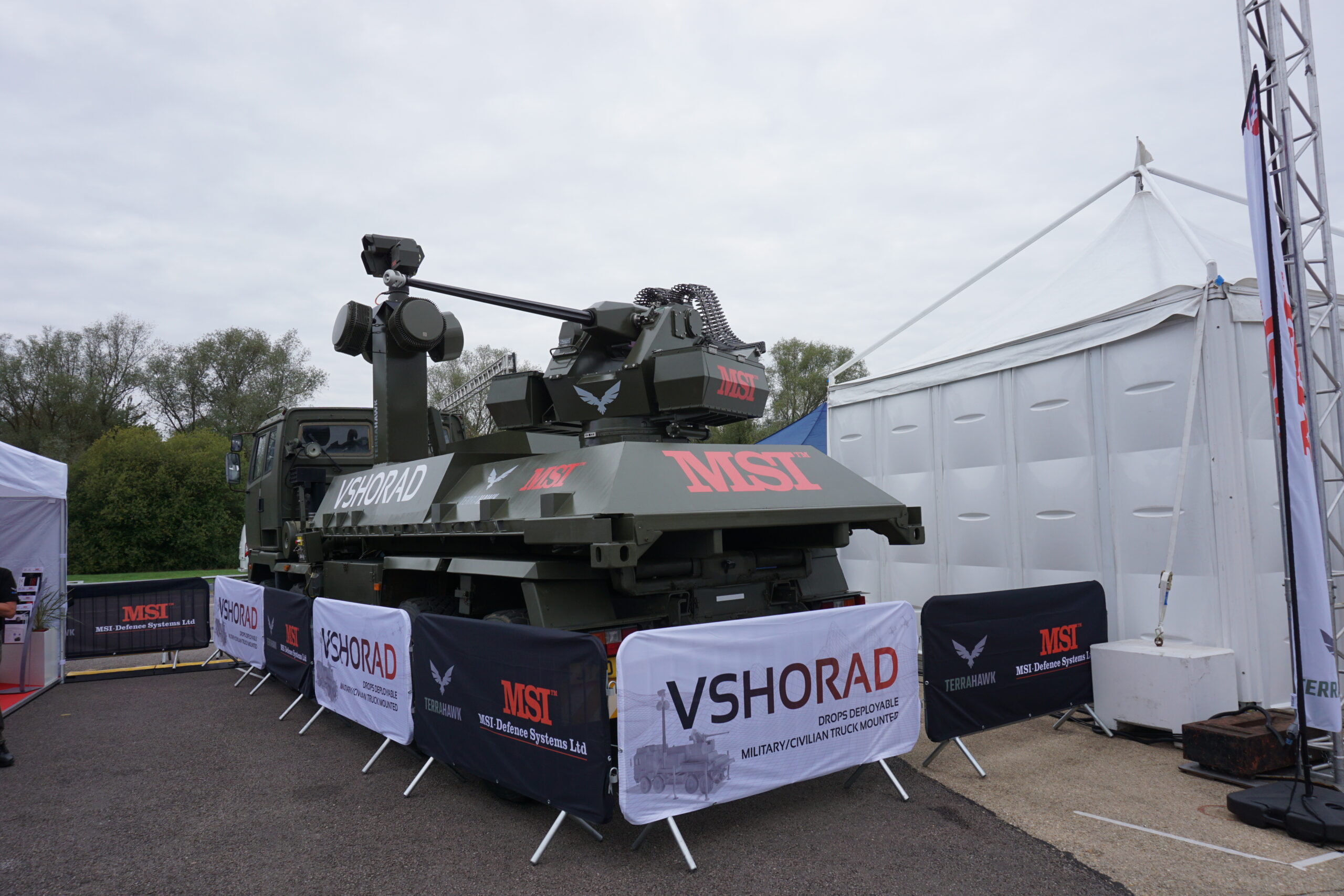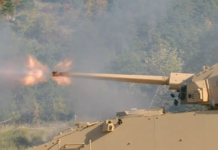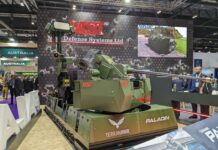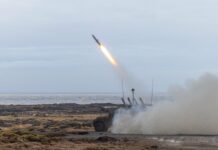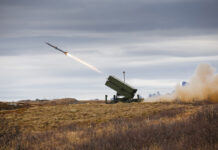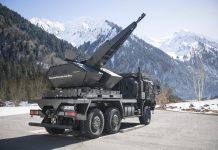The Norfolk-based company MSI displayed their TERRAHAWK Very Short Range Air Defence (VSHORAD) flatbed-based mobile air defence system for the first time at DVD 2022. The system is primarily aimed at countering Class 1 and Class 2 Unmanned Aerial Vehicle (UAV) threats, and is notionally being promoted as an automatic cannon-based system, although an MSI representative stated that various other effectors could be used instead if specified by the user.
The configuration shown at DVD was an ‘all-in-one’ version of the system, with sensors and effectors mounted on a single Demountable Rack Offload and Pickup System (DROPS) type flat load bed. The system is intended to be platform-agnostic, and is capable of being mounted on any vehicle with the requisite space and payload carrying capacity, which in this case would typically be trucks. An MSI representative stated that a decoupled version of their solution, with sensors, effector, and control system mounted on separate bases linked via fibre optic cable, had already entered use with a Gulf state customer.
In terms of major system components, the front-left of the flat load bed was fitted with a mast hosting four RADA MHR S-band Active Electronically Scanned Array (AESA) pulse doppler radars and MSI’s SATOS optical sensor head with HD Day, HD Thermal, and laser rangefinder (LRF) channels. The configuration of four radars fixed at 90° to one another permits coverage through 360°, and according to an MSI representative, the MHR radars are able to detect Class 1 UAVs out to 5 km, or Class 2 UAVs out to 25 km. The sensor head is responsible for fire control, and can be cued to a detected target’s azimuth and elevation based on tracks from the radars.
At the rear of the load bed is a remote weapon station (RWS) armed with a Northrop Grumman Mk44 Bushmaster II 30 mm dual-feed automatic cannon. The MSI representative stated that the company offers the RWS in two configurations – light and heavy. The primary difference between the two is the amount of ammo stored, with the light configuration having 200 ready to fire rounds, split between two ammunition stowage bins located on either side, while the heavy configuration has 400 ready rounds, also split between two stowage bins. To power the system, a power supply was fitted at the front-right of the load bed.
It is noteworthy that the remote weapon station is completely decoupled from the sight used by the weapon for fire control. While an atypical arrangement on most vehicles, an MSI representative stated that this arrangement offered the benefit of lower vibration felt by the optic during firing, since it is mounted much further from the cannon than usual.
For use with the TERRAHAWK VSHORAD system, the Mk44 would typically be expected to be equipped with Programmable Air Burst Munitions (PABM) rounds or Proximity-Fuzed rounds, since conventional rounds would typically be much less effective against UAV threats. An MSI representative stated that the company has tested both natures of ammunition, resulting in a notional effective range from 600 m out to 1.8-2 km for PABM rounds, and from 800 m out to 1.6-1.8 km for the air burst rounds.
Developmentally, the system is at Technology Readiness Level (TRL) 2 at the moment, however as already noted, the decoupled version of the system is already in service, so the level of effort required to complete the all-in-one configuration would presumably not require many years. The version shown at DVD was a prototype, with a few key differences from the envisaged final version. Among these are replacing the prototype’s fixed sensor mast with a telescoping mast to allow easier transport, and the addition of hydraulic outriggers, which could be used to help stabilise the vehicle when stopping to fire.
Mark Cazalet



